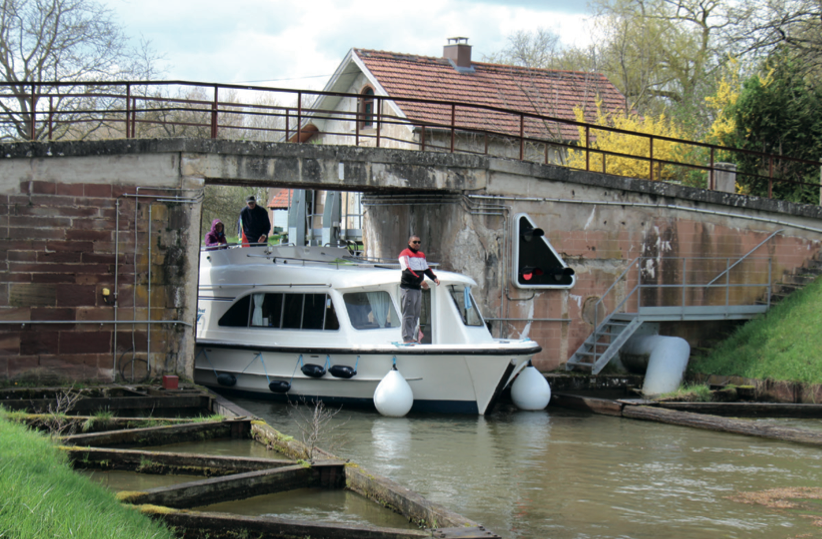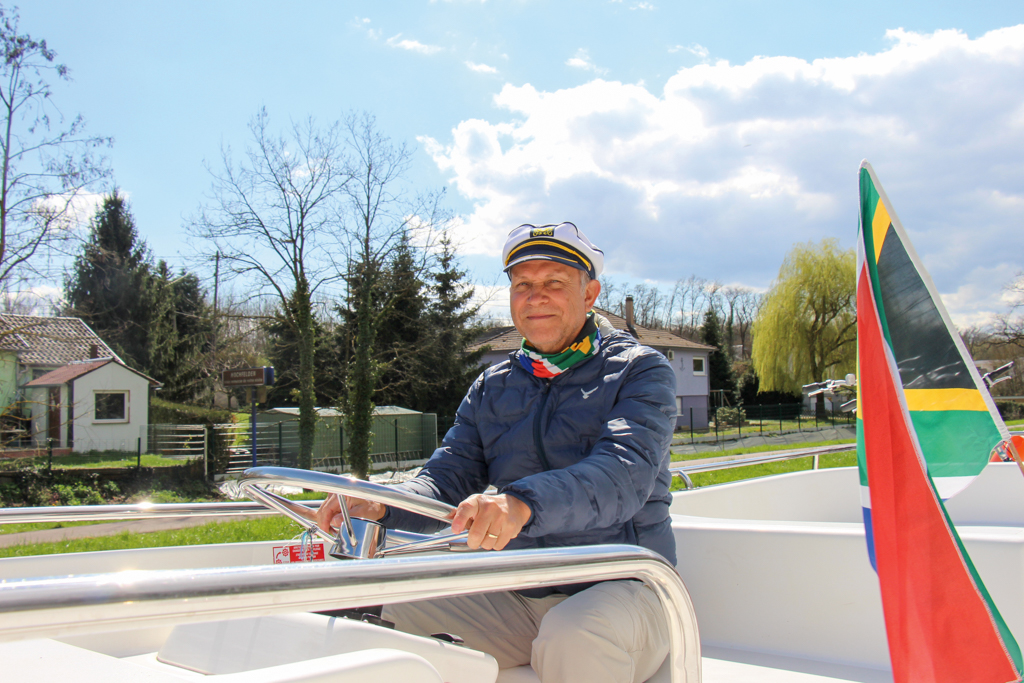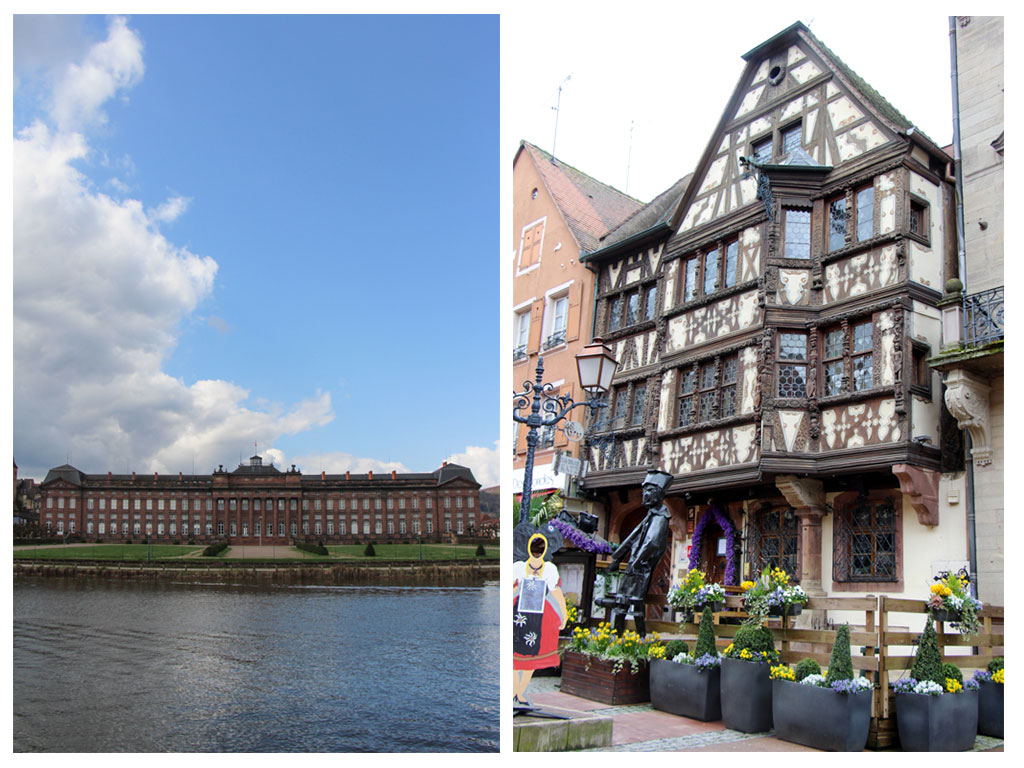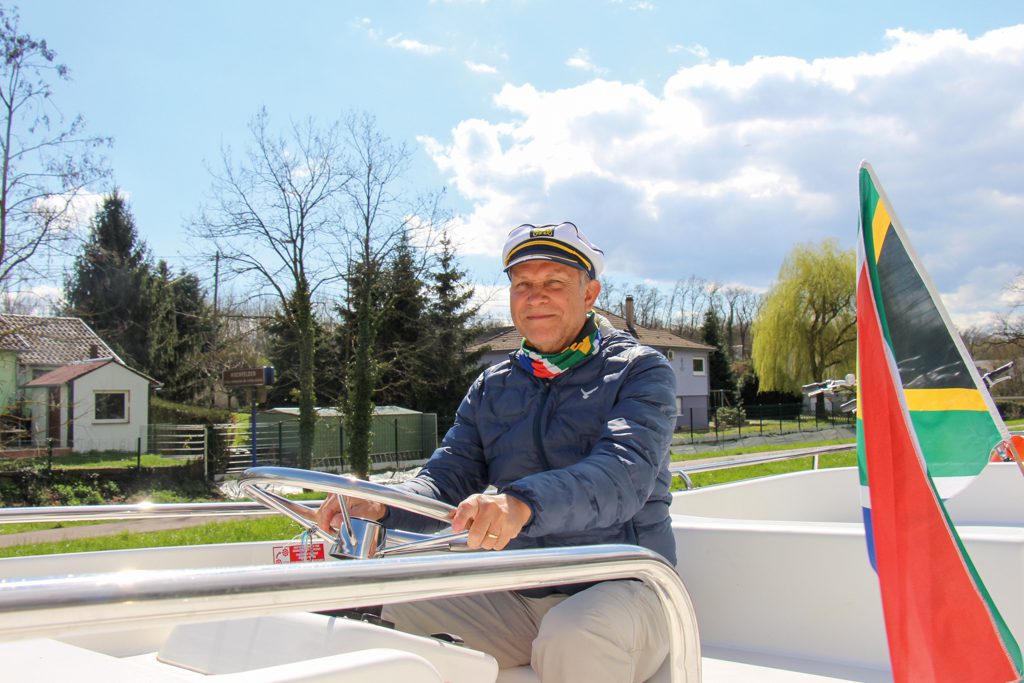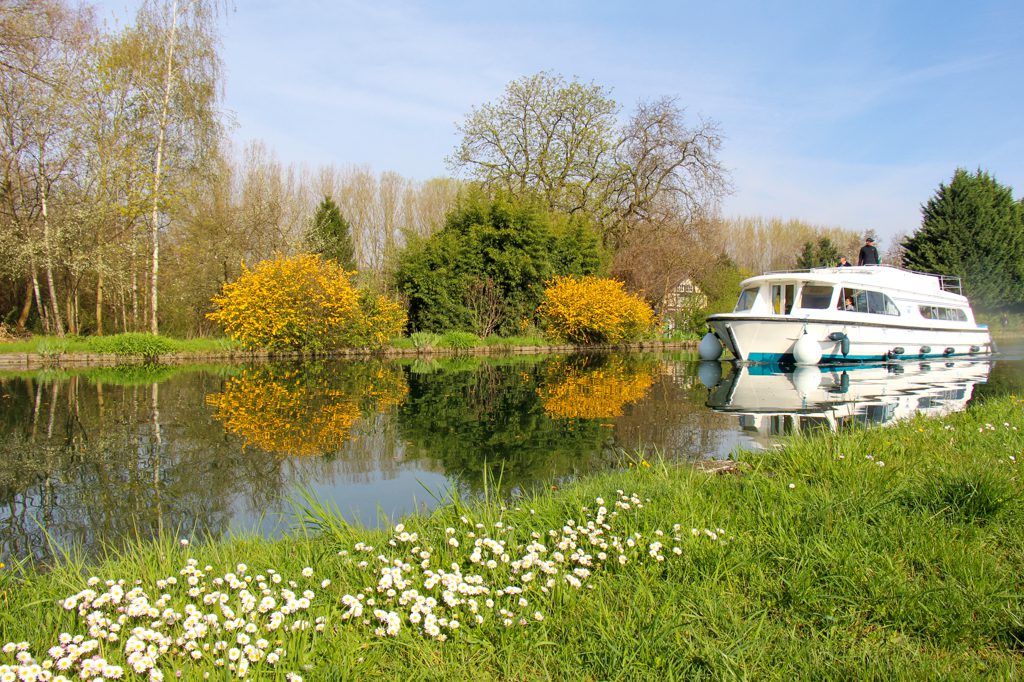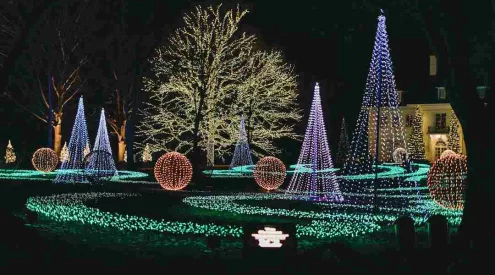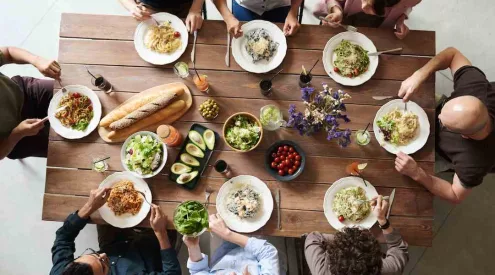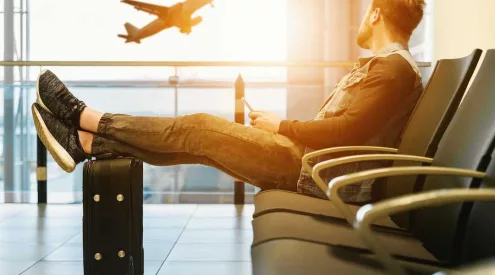Holidaying on the canals of France isn’t out of your reach. Here’s how Popular Mechanics editor Anthony Doman made it work.
Skip straight to the travel planner here
We’re still friends – me, my wife Theda, and Frank and Nina van der Velde – nearly two decades after passing the ultimate friendship test: holidaying together, cruising the canals of France for a memorable week in August 1998. Fast-forward to 2016. Through chilly April showers, eight of us are puttering eastwards, cooped up inside a 14,5-metre cruiser that seems increasingly cramped.
This has the potential to shred, never mind strain, the bonds of friendship. Probably not the best time to remind my wife that it was her brainwave that got us here. Fortunately, the sun came out. The sense of humour was rebooted. And we really started cruisin’.
We’re a family of runners, and the idea had been to introduce our daughter to the big leagues with the Paris Marathon. Why not drag along the son-in-law and make it a real family holiday, stretch it to two weeks and take in a canal trip? Four of our running-group friends agreed. They insisted on coming along too.

From left, daughter Antonia Appel, Irma Ronne, writer Anthony, George Woodman, Cheryl Bongers, Robert Borel-Saladin, son-in-law Craig Appel (and Theda Doman was behind the camera).
Which is why, on post-marathon Monday, 450 kilometres from Paris, a travel-weary but manically grinning eight stepped on to a Salsa 40 cruiser. And by sheer coincidence, out of all the many canal routes available, just one suited our early April Monday afternoon departure: the Arzviller Experience, the exact route we’d done in 1998.
Think of a canal cruiser as a big motorhome, only without wheels. There are two steering positions – one inside and our preferred one, up on the flying bridge. Armed with a pre-trip briefing, hands-on demonstration and a comprehensive boat book, you’re almost, but not quite, mentally prepared for the mildly unnerving experience a few days later of floating through two narrow tunnels close by, a total of three kilometres long, in the dark.
Most of our party had a go at piloting, and some clearly took to it more than others. There are plenty of bends – and traffic, at times. With a speed limit of eight kilometres per hour, you’ll find out soon enough that a leisure boat responds sluggishly to steering inputs and needs constant minor corrections and countersteering to stay on course. Bigger models like the Salsa 40 have the advantage of bow thrusters. Still, you’ll be grateful for those fenders.
There’s a lot more to it than driving; the locks will keep you busy, even though access in this region is now largely automated. The system employs a variety of sensors (including radar, infrared beams, remote controls and clearly signposted pull-rope actuators) to prepare for a boat’s approach. The sensors trigger simple green/red traffic light-style indicators.
Once you’re in the lock and tied up firmly fore and aft, the engine running in neutral, a tug on the actuation rod alongside sets the process in motion automatically. The entry gates close, the water level adjusts and once it’s at the right level, the exit gates open. Which doesn’t adequately set the scene for the huge lift at Arzviller – this mechanical marvel can hoist or lower 900 tons in 25 minutes, from mooring to exit. It eliminates 17 locks and what used to be an eight-hour ordeal.
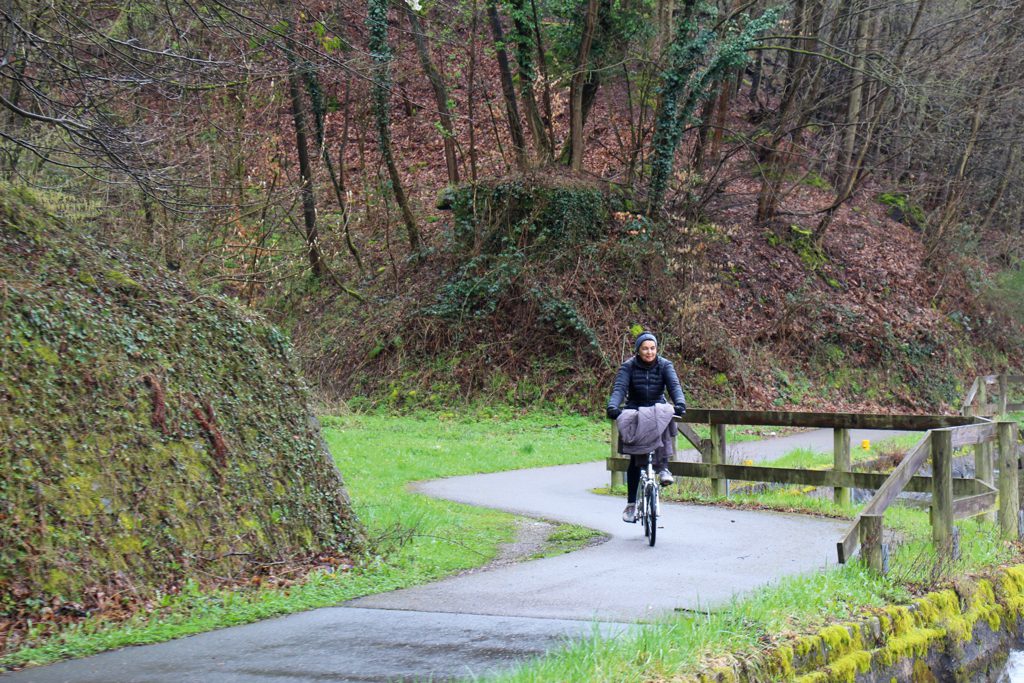
Theda cycles alongside the canal – the boat’s top speed is 8km/h so there’s no chance you’ll get left behind.
If cabin fever strikes, you can hit the smoothly tarred former towpaths, which are closed to motorised traffic. We saw runners, riders, walkers and rollerbladers. Towns and supermarkets are often within walking distance, and bicycles are a great help in bringing back local produce, which is usually of excellent quality – with prices that didn’t scare us off – plus the variety is staggering.
In summer, part of the off-boat experience is haggling for fresh produce from canal-facing back gardens. Back in ’98 we bought gigantic marrows from a stout riparian we dubbed Mrs Boathook on account of my remembering, way too late, that I had left said hook by her back gate.
For this trip we’d planned two big stops, in Saverne and Strasbourg. At the first, an impressive view of the town along the arrow-straight entry is interrupted by a vertiginous lock, at 5,43 metres it’s more than double the standard 2,6-metre depth. It’s an eerie sensation, rising out of the dripping gloom until you’re able to eyeball passers-by. For the most part, people don’t pay much attention to the canal boats – but activity at a lock always seemed to draw a few spectators.
Back in 1998, it was here in Saverne that we first discovered that tasty Alsatian speciality, tarte flambée. We also pedalled to the ‘eye of Alsace’, the medieval Château de Haut Barr, which overlooks the Alsace plain. This time, with 42,2 Paris Marathon kays in our legs, our party opted for a stroll around town instead. Saverne’s sloping cobbled main drag is an aesthetic treat lined with characterful buildings and, in spring, colourful flowering plants – notably geraniums – in street and window boxes.
The entry to the capital of Alsace, Strasbourg – ‘town at the crossroads’ – is a different level of awe-inspiring. You waft past the glass edifice of the European Parliament building, turn right at the imposing gate holding back the Rhine, and your world expands into an intimidating basin traversed by seriously grown-up boats. We found secure mooring for three nights at the Quai des Belges, run by an outfit called Koejak. It’s close enough to the centre of town to explore sights such as the historic quarter of Petite France and indulge in some tourist shopping amid cherry blossoms and characteristic purply- pink magnolias. It’s also where we met Bernadette and Heinz, a Swiss couple who have been travelling the canals since 2010.
The weather in Strasbourg was good enough for me to head out on a run across the border to Kehl in Germany. To celebrate our last night in the city, we splashed out on dinner at the popular Au Pont Saint- Martin restaurant. Perched over the water, we watched a glorious Saturday gracefully fade to black.
Our holiday quietly ebbed away on a golden Sunday evening at Boofzheim. Nothing useful was open there, or at the two neighbouring towns I cycled to. Fortunately, if French cuisine is regarded as superior, it follows that French leftovers are a cut above too. Our cobbled-together farewell supper (baguettes, two cheeses, salami, brinjal bake and crisps) left a warm glow to match the surroundings. We even had sufficient for the next day’s breakfast. It seemed like an appropriate time to remind my wife that it was her brainwave that got us all here in the first place.
So far, we’re still friends.
Plan your trip to France

Tiny Boofzheim base at the end of the cruise; the quiet stretch south between Strasbourg and Boofzheim.
Getting there
We paid R10615 per person to Paris on Qatar Airways. Flying via other European hubs to Strasbourg might be a cost-effective alternative to our Paris-linked itinerary (Strasbourg is closer to Hesse, the starting point of the cruise – just 78 kilometres away).
Getting around
To get to Le Boat’s base in Hesse (450 kilometres from Paris), we took the high-speed TGV from Gare du Nord to Sarrebourg (R690 per person) and thence by taxi (R262). From the Boofzheim end-point our R206 taxi, booked when collecting the boat, took us to the inter-city train from Benfeld to Strasbourg (R83 per person). The return TGV from Strasbourg to Paris cost around R965 per person.
The Arzviller Experience canal cruise runs one way for 106 kilometres along the Canal de la Marne au Rhin, past 13 key towns and villages and through 43 locks. Without stops it would take 23 hours of cruising, based on an average speed of 7,5 kilometres per hour and 13 minutes per lock.
When to go
Canal-cruising season is April to October. The weather can be sunny, misty, overcast or rainy in spring, summer and autumn. Early spring, when we went, the canals are quieter. Summer is high season for cruising, but autumn is most popular.
The boat
We picked the ‘8+4’ Salsa 40B with four double cabins, each with separate access to a bathroom either side (to avoid ugly scenes, we allocated the two bathrooms along strict gender lines). There are also four sleeper couches (good for children) in the lounge, a smart galley and sundeck. For the rest, from gas stove to two fridges, linen and towels, we had everything you’d expect to find in a fully stocked motorhome – although you might want to rent a gas braai from Le Boat. Our ‘starter pack’ (R720) included essentials such as bread, olive oil, coffee, milk, sugar, butter, condiments, wine, beer, snacks and water. The boat has interior heating and fans but no air con.
Costs
Boat hire for the week was R25182, but we got an early-booking discount. Actual cost was R26482, including a one-way trip fee of R1795 and damage waiver of R361 per day. You pay a fuel deposit of R3450; we ended up using only R2330 of diesel. Charges at formal moorings (in towns) are about R275 a night, which includes water and electricity. Outside of towns it costs nothing, and you’ll use the onboard water and deep-cycle batteries. Trip rates vary according to size and class of boat, which route you choose and the season. leboat.co.za
Supermarket prices: baguette or a kilo of potatoes around R20, R110 for 500 grams of cheese, R48 for a dozen eggs, R27 for a 500ml of beer and a passable bottle of red wine costs about R115. We never came close to exceeding our daily food budget of R700 each.
Need to know
The ‘crew’ don’t need boat shoes but it can get slippery; tackies are fine. Also pack a lightweight rainjacket. Cycling or gardening gloves are good for avoiding rope burn when mooring. Hats, sunglasses and sunblock are advisable due to the glare off the boat’s white deck. Pack a torch – it can get dark around the moorings. Because space is at a premium on board, keep your luggage compact.
Do this
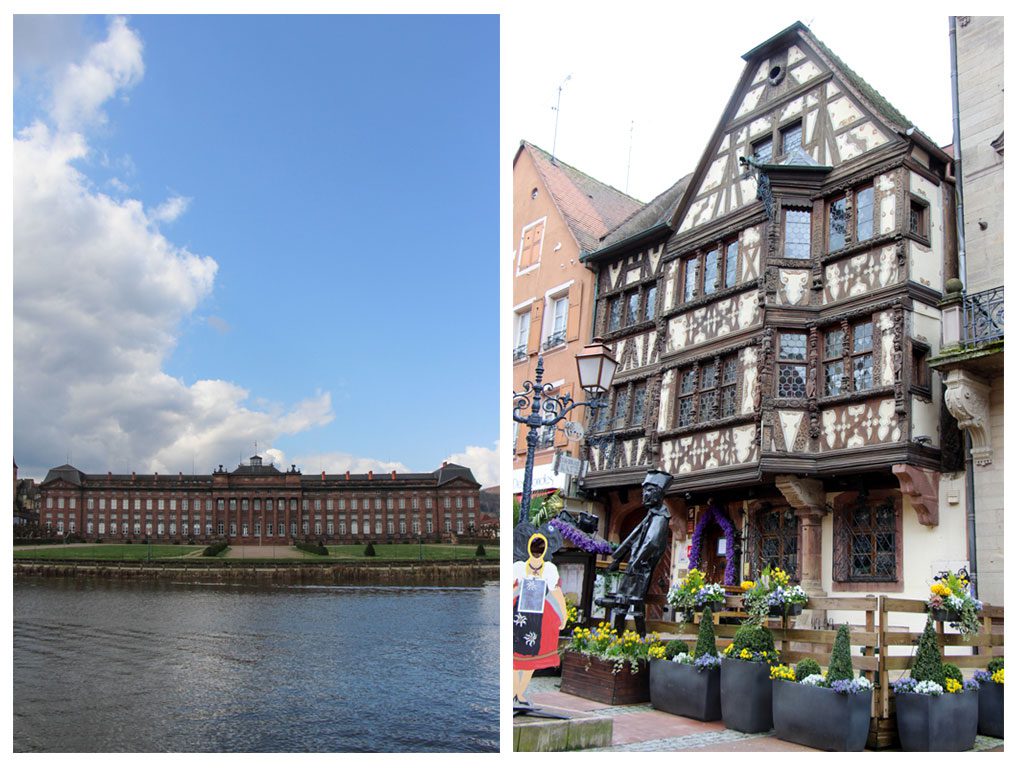
The moorings in Saverne are beside the 18th-century Rohan Palace, once home to the archbishops of Strasbourg; the Taverne Katz in Saverne boasts ornate timber work and a history dating back to the 1600s.
Hire bicycles. We got four city bikes from Le Boat at R679 each for a week. They proved invaluable for grocery shopping and general leg-stretching.
In Saverne the Château des Rohan is the ‘poor man’s Versailles’ (entry R45 per person) and the rose garden, Le Roseraie, created in 1898 is equally lovely (R34 per person).
In Strasbourg, the Notre-Dame Cathedral has magnificent stained-glass windows and a medieval astronomical clock with automatons (they appear at 12.30pm daily). Entry is R74 per person.
Dine next to the river at Au Pont Saint- Martin in Strasbourg’s picturesque Petite France/Quartier des Tanneurs district. Regional menu; mains cost around R220. pont-saint-martin.com
Eat tarte flambée, aka Alsatian pizza. A crisp, crackly base topped with onions, crème fraîche and lardons (matchsticks of bacon). You can find them everywhere (including at Au Point, from R100).
Drink wine. Alsace is a noted wine region, especially for Riesling. Its wine route is one of the oldest in France, and runs south from west of Strasbourg for 170 kilometres (parallel to the final Grand Ried section of the canal cruise but about 20 kilometres ‘inland’). alsace-wine-route.com
This story first appeared in the April 2017 issue of Getaway magazine.
Our April issue features a guide to the Otter Trail, the sunniest roadtrip in SA, and 12 awesome farmstays.










